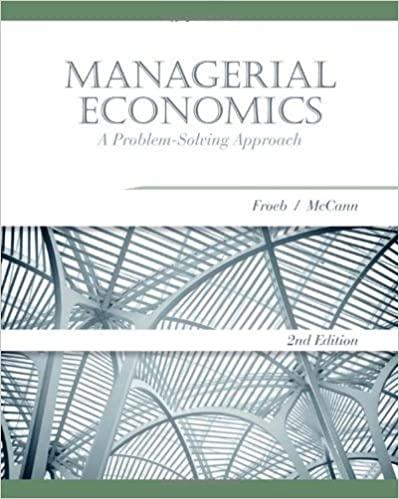Answered step by step
Verified Expert Solution
Question
1 Approved Answer
IN THE REAL WORLD: IMMIGRATION INTO THE UNITED STATES AND THE BRAIN DRAIN FROM DEVELOPING COUNTRIES Several recent studies have shed light on the

IN THE REAL WORLD: IMMIGRATION INTO THE UNITED STATES AND THE BRAIN DRAIN FROM DEVELOPING COUNTRIES Several recent studies have shed light on the type of labor that decides to emigrate to the United States and the impact of immigrants on the U.S. economy. While there is consid- erable debate regarding the Borjas claim that current U.S. immigrants are relatively less skilled than their earlier counter parts (and thus that current migrants are less likely to have a positive impact on the economy than their predecessors),* it appears clear that the typical person who has emigrated from most developing countries in the past is relatively skilled. In 1999 William J. Carrington and Enrica Detragiache presented the results, using 1990 census data, of an exam- ination of the educational background of the stock of developing-country emigrants (not the flow of migrants, which Borjas was examining) over 25 years of age who now reside in the United States. The first striking result in the study was that individuals with no more than a primary edu- cation (zero to eight years of schooling) accounted for only about 7 percent of the total immigrants (i.e., about 500,000 of the total of 7 million immigrants). Approximately 53 percent (3.7 million of the 7 million) were persons from other North American countries (which included Central American and Caribbean countries in the Carrington and Detragiache definition) who had at most a secondary educa- tion. Most of these individuals were from Mexico. Almost 1.5 million immigrants (21 percent) were highly educated individuals with a tertiary level of schooling (more than 12 years) from Asia and Pacific countries. (Note: this "highly educated" measure does not include international students in the United States, who were excluded from the "immigrant" definition.) In addition, although small in number (128,000), 75 percent of immigrants into the United States from Africa consisted of highly educated individuals. More than 60 per- cent of migrants from Egypt, Ghana, and South Africa had a tertiary education, as did 75 percent of migrants to the United States from India. Immigrants from China and South American countries were about equally divided between the secondary and tertiary education levels. Mexico and Central American countries thus appeared to be an exception in that most of the migrants from those countries had education only through the secondary level. An important point to make is that, in general, individuals who emigrate to the United States tend to be better educated than the average person in their home countries. Further, the migrants often represent a sizable portion of the similarly skilled workforce in their own countries. Carrington and Detragiache present some truly startling statistics in this regard. They calculated the stock of immigrants of a given education level in the United States from any given country and then divided that number by the size of the population of the same education level who remained in the home country. For example, at the tertiary-education level, the number of Jamaican immigrants in the United States divided by the size of the Jamaican population with tertiary education gave a fig- ure of 70 percent. While the number of Jamaican immigrants is relatively small in absolute terms and the percentage of the Jamaican population with tertiary education is likewise small, this figure gives concrete force to the notion of brain drain from developing countries. Other (small) developing countries also had high numbers with regard to the tertiary- education level-Guyana (70 to 80 percent), The Gambia (60 percent), and Trinidad and Tobago (50 to 60 percent). El Salvador, Fiji, and Sierra Leone had ratios greater than 20 percent. For many countries in Latin America, the ratios that were the highest were those with respect to secondary education rather than tertiary education [e.g., Mexico (20 percent), Nicaragua (30 percent)], but, even so, their magni- tude indicates a substantial outflow of skill. This loss of tertiary-level (and secondary-level) individu- als cannot help but impede the economic and social progress of source countries spread throughout the world. However, recent research suggests some mitigating factors. For exam- ple, brain drain scientific personnel appear to interact with peers in their home countries, sharing ideas and increas- ing the flow of innovation from developed to developing countries. See George Borjas, Heaven's Door (Princeton, NJ: Princeton University Press, 1999); Jagdish Bhagwati, "Bookshelf: A Close Look at the Newest Newcomers," The Wall Street Journal, September 28, 1999, p. A24; Spencer Abraham, "Immigrants Bring Prosperity." The Wall Street Journal, November 11, 1997, p. A18; "Immigrants to U.S. May Add $10 Billion Annually to Economy." The Wall Street Migration," The Economist, November 2, 2002, p. 13 (where an esti- Journal, May 19, 1997, p. A5; "The Longest Journey: A Survey of mate is presented that first-generation migrants to the United States impose an average net fiscal loss of $3,000 per person while the sec- ond generation yields an $80,000 net fiscal gain per person); "Give Me Your Scientists," The Economist, March 7, 2009, p. 84. 'William J. Carrington and Enrica Detragiache, "How Extensive Is the Brain Drain?" Finance and Development 36, no. 2 (June 1999), pp. 46-49.
Step by Step Solution
There are 3 Steps involved in it
Step: 1

Get Instant Access to Expert-Tailored Solutions
See step-by-step solutions with expert insights and AI powered tools for academic success
Step: 2

Step: 3

Ace Your Homework with AI
Get the answers you need in no time with our AI-driven, step-by-step assistance
Get Started


